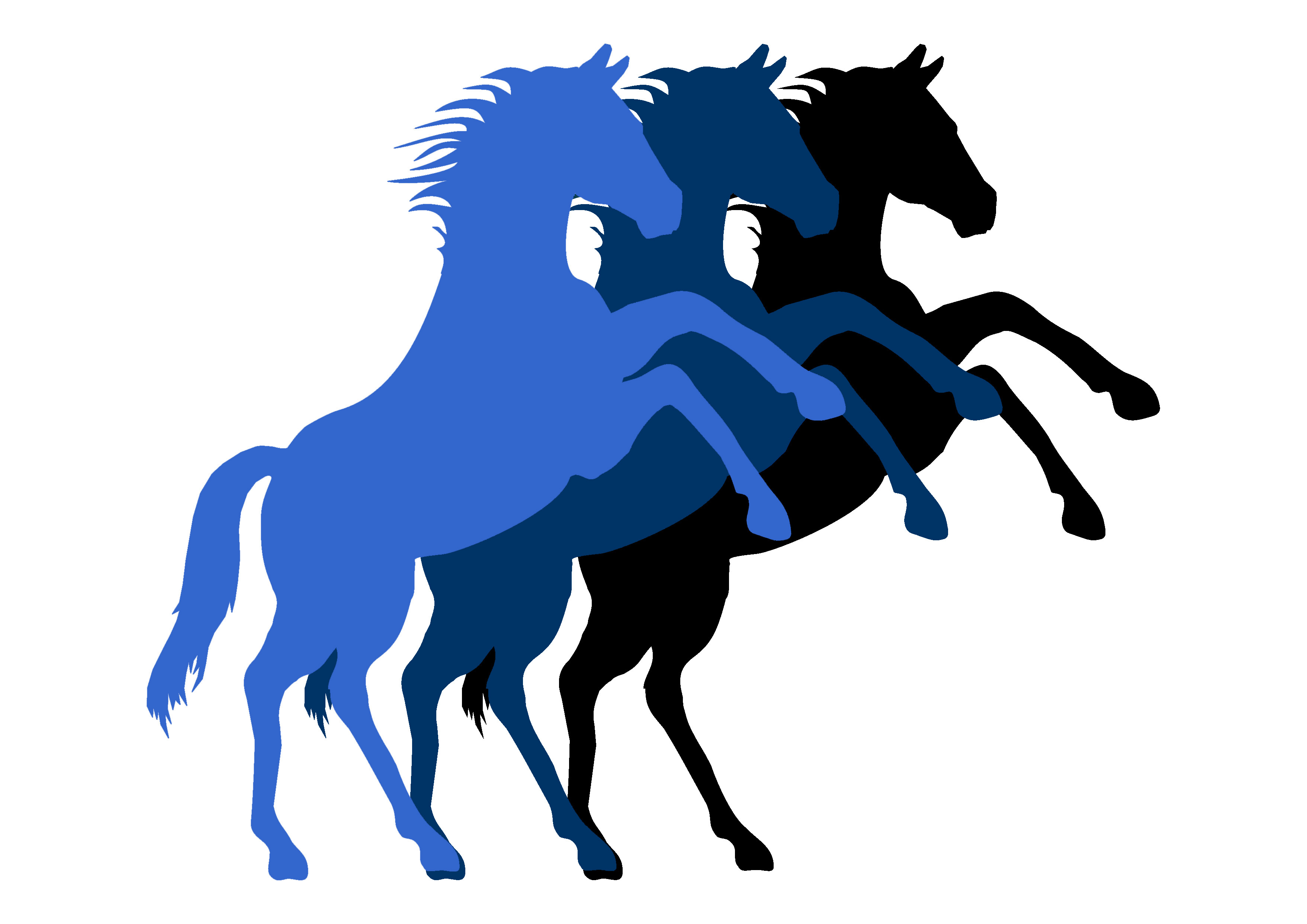Common Dental Issues
Here are some of the dental disorders we commonly find while carrying out a detailed oral examination. Although for illustration purposes they appear obvious, most start as small fairly insignificant
issues and only become of significance if left untreated.
Bearing in mind equine cheek teeth only erupt at approximately 2-3 mm per year, it seems hard to believe that we regularly come across focal overgrowths
in excess of 20mm which is a clear indication that the patient has had significantly sub standard dental care and treatment in the past.
Sharp Enamel Points
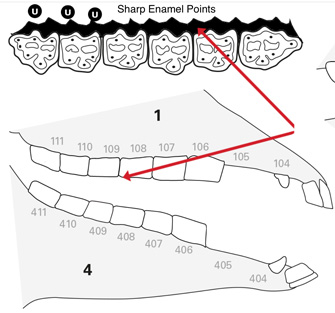
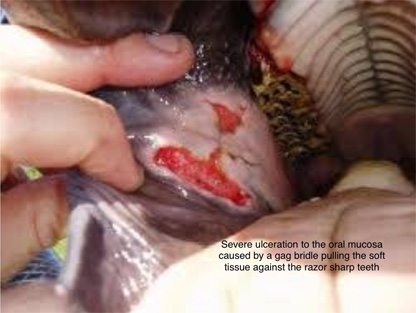
The most routine treatment a practitioner will carry out is the removal of sharp enamel cusps that develop as the horse chews.
The importance of this should never be underestimated and it is
imperative that the dental arcades are left uniformed so that the horse is comfortable and functional but equally important that the integrity of the dentition has not been compromised through doing so.
Sharp enamel points develop on the outside of the upper cheek teeth and the inside of the lower.
If left untreated they will cause ulceration to the cheeks and or tongue and in some cases can become very severe and
lead to more significant masticatory or behavioural issues.
Hooks
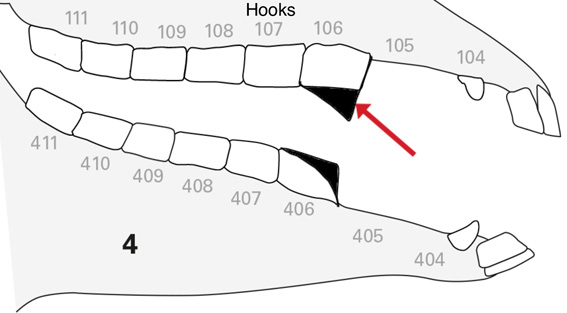
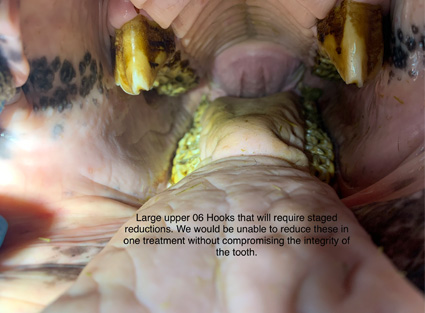
These are overgrowths caused by a portion of the tooth not being in wear with the opposing tooth and affect the first and last teeth in the arcade.
If left untreated they will eventually cause trauma to the
opposing mucosa and can cause “Diastema” between the affected tooth and the adjacent one due to continuous forces in the wrong direction.
These types of overgrowth also restrict the Rostral / Caudal (Forward / Backward) movement of
the horses Mandible (Lower Jaw) and although this is fairly limited in an equine under normal circumstances it is still essential to allow the horse to work in an outline and masticate feed comfortably.
Ramps
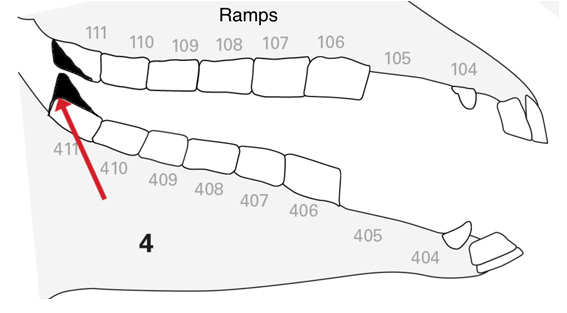
These are very much the same as “Hooks” and cause very similar issues.
ETR/ATR
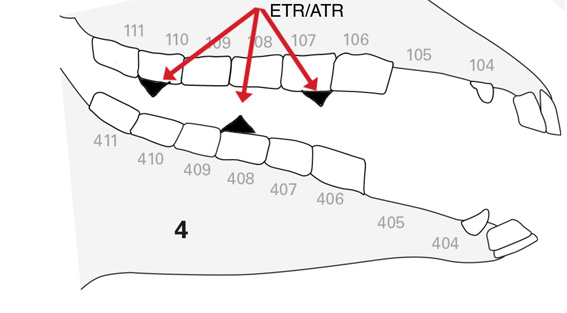
“Excessive Transverse Ridges” or “Accentuated Transverse Ridges”. These are two terms used to describe the same issue.
Equine cheek teeth should have natural transverse ridging throughout their dental arcades and these should not be reduced as they help to provide an “aggressive” chewing surface that grinds feed stuff efficiently.
An ETR however is a ridge that is more prominent than the rest of the ridging in the arcade. ETR’s can lead to restricted movement of the jaw and also develop opposing a diastema and therefore escalate the issue.
In these circumstances the ridging should be reduced to a point that it is “uniform” with the rest of the normal ridging throughout the arcade.
Displaced Teeth
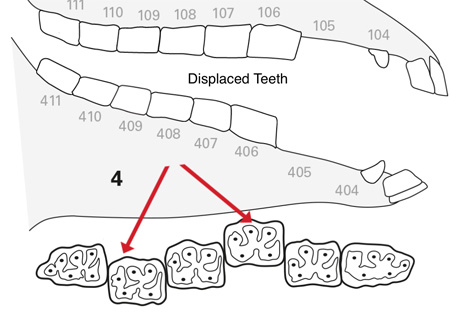
A displacement is when a tooth/teeth sit out of alignment with the rest of the dental arcade.
The most common causes of displacements is overcrowding of the cheek teeth, and impaction of baby (deciduous) teeth.
If left untreated it can cause a number of problems. The usual 15° angle of the teeth can be dramatically changed as the affected teeth are not completely in wear with the opposing teeth.
Displacements can also cause Diastema/ periodontal disease where food is able to pack between the neighbouring teeth.
Diastema
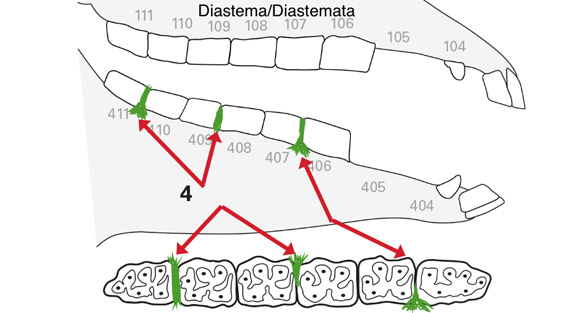
A diastema or diastemata (multiple diastema) is a space or gap between the teeth. A horse has 6 teeth in a dental arcade and these should sit tightly together.
Amongst other reasons a diastema can be caused by
displaced teeth and focal overgrowths such as hooks, ramps and ETR’s. Feed material will collect in these gaps and if left untreated will lead to periodontal disease (disease of the structures supporting and surrounding the teeth) which is extremely painful and will eventually lead to premature loss of affected teeth.
This highlights the importance of a properly trained, highly skilled and qualified practitioner carrying out a thorough oral examination and a high standard of corrective dentistry which will help to improve or more importantly prevent such issues. That being said in some instances patients will require referral for more extensive treatment.
Missing Teeth
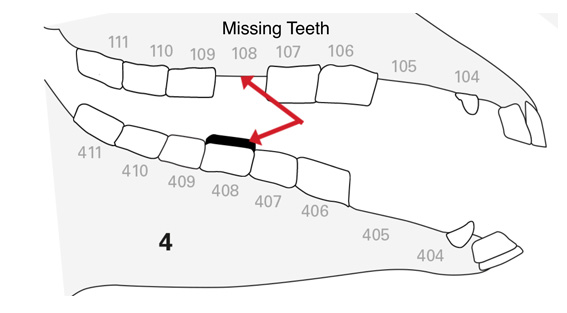
Teeth may be absent for a number of reasons whether it be as a result of extraction due to an irreparable issue or as a result of a developmental issue leaving the horse with less teeth than they should have in normal circumstances.
Either way this can be an issue to the horse as the tooth opposing the absent one will continue to erupt and therefore require regular treatment in order to avoid issues in the long term.
Wolf Teeth
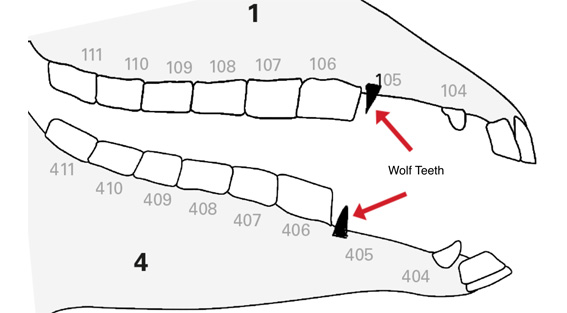
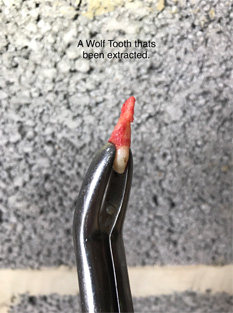
Wolf Teeth are a vestigial tooth that sit just in front of the first cheek teeth. Not to be confused with Canine teeth. They can be found on both the upper and lower jaw but are more commonly found on the upper.
They are sometimes removed if it is considered they are causing ridden issues. They certainly do not need to be removed in horses that are not worked.
